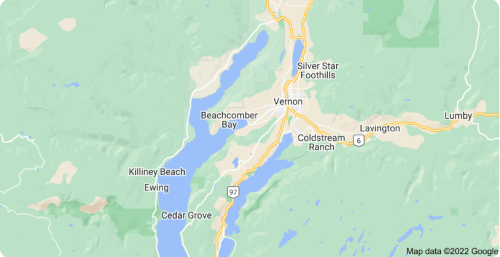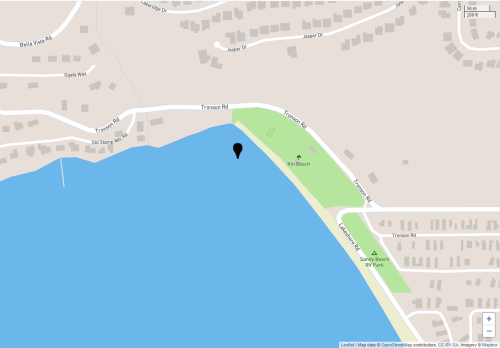Lapin Protectorate
The Lapin Protectorate is the largest geographical Protectorate of The Great Houses in the American Continent. Ruled and protected by House Lapin, it consists of the pre-Word War Canadian provinces of British Columbia, Alberta, Saskatchewan, Manitoba, and Ontario; the pre-Word War Canadian territories of the Yukon, the Northwest Territories, and western Nunavut; the pre-Word War American states of Alaska, California, and western Arizona; and the post-Word War island known as Tiki Island. It is bordered to the west by the Pacific Rim and the Mollusca Protectorate, south of the 49th Parallel and north of California by the Meles Protectorate and the Ailurus Protectorate, and is bordered to the east by the House Avis Territories.
As of the Woodlander Sovereign Corridor Treaty of 2024, Lapin jointly administers the Woodland Sovereign Corridor with the other two Houses of the Woodland Family Alliance, House Ailurus and House Meles. The Woodland Sovereign Corridor consists of the higher elevations of the Rocky Mountain Range.
Geography
Being a vast landmass, the Lapin Protectorate includes a wide variety of significant geographical features. It occupies almost all of the North American Pacific West Coast, including the major ports of Anchorage, Prince Rupert, Vancouver, San Francisco and Los Angeles. It includes a significant slice of the Arctic Circle and most of the Canadian Shield. It contains vast prairies, deserts, and one of the world's best agricultural corridors in terms of soil quality. It boasts high mountains, vast forests, and extensive river networks, and includes the northwestern quarter of the Great Lakes, and the northern side of Niagara Falls.
Ecosystem
A variety of biomes are represented in the Lapin Protectorate as well. Mostly because it ranges along the majority of the northern hemisphere in some form or another, it includes tundra, taiga, temperate forest, temperate rain forest, tropical island, desert, semi-desert, plains, and steppes:
Alaska and what was once Northern Canada is known for its harsh, cold tundra environment
Much of what was once Canada consists of boreal forest (taiga)
The Prairie Provinces are vast plains
Most of the West Coast region is a temperate rain forest, known for rainy weather, mild winters, and lush vegetation
Inland British Columbia, Alberta, Saskatchewan, California and the Lapin portion of what was once Arizona include significant deserts, ranging from colder ecosystems in the north to hot, dry, cactus or dune-bearing deserts in the south
Much of BC, Alberta, California and Ontario include alpine and steppeland biomes
The Okanagan Valley region (where The Warren is located) has a Mediterranean-like mini-climate and biome, thanks to the desert-like inland and the numerous, large, glacial-formed lakes in the region
Ecosystem Cycles
With the vast majority of the Protectorate being part of the boreal forest, coniferous trees maintain their evergreen needles throughout the year. In the "middle" portions, there are more deciduous trees than coniferous, and much of the former Canadian population along the 49th Parallel lives in areas renowned for their seasonal leaf colour changes in autumn. Tropical portions are subject to seasonal monsoons, and the Great Lakes region's extremes of temperature, ranging from 40 degrees Celsius in the summer to -40 degrees in the winter, leads to humidity and blizzards.
Seasonal changes can be extreme or mild, depending on distance from the equator. Winters in the northern Arctic and sub-Arctic regions routinely reach temperatures of -40 degrees (Celsius or Fahrenheit) or less. Winters in California rarely change more than about 10 degrees Celsius (although Californians often claim to be freezing.) Tiki Island is subject to tropical storms, and Ontario and the Prairies are subject to blizzards.
However, climate change is bringing more extremes of weather as part of seasonal shifts. Most of the Lapinite West Coast has been suffering from extreme drought conditions and frightening forest fires over the past decade. The Great Lakes region, California, and Arizona have suffered from extreme cold snaps, hurricanes, and blizzards. Tiki Island, the Lower Mainland/Pacific Northwest region, and coastal California have experienced increasingly severe tropical storms. With the temporary climate cooling effect caused by King Bob's meteor strikes in the past two Word Wars, these effects are expected to be somewhat mitigated over the next few years. However, without a move to more sustainable energy technologies, climatologists are well aware this will only buy a little more time before climate collapse.
Localized Phenomena
Perhaps the most characteristic unique phenomenon is the Aurora Borealis, or Northern Lights, which appear when solar debris interacts with the Earth's magnetic field, making spectacular luminescent displays in the atmosphere.
The Prairies are known for spectacular thunderstorms in the spring and summer, and occasional tornados in the summer and autumn.
Recent seasonal droughts have led to vast forest fires in BC, Alberta, Ontario, and California.
Climate
Because of the size of the landmass involved, climate varies considerably, depending on region. The vast majority of the Protectorate would be considered Arctic tundra or boreal forest. However, there is also a significant temperate region and a significant tropical/subtropical region. The northern regions are cold, with winters routinely dipping into extreme subzero temperatures, and cold and short springs and summers. The prairies range from cold, windy winters to comfortable summer and autumn seasons. The Great Lakes region receives a lot of percipitation, and is known for summer humidity and blizzards. The West Coast region ranges from mild to warm winters, depending on latitude, long growing seasons, and lush forest climates. Inland and in most of the southern regions, there are significant deserts and semi-deserts. Tiki Island and some of the southern regions of California are tropical and sub-tropical, with warm, humid climates and wet and dry seasons.
Natural Resources
The Lapin Protectorate is capable of completely sustaining itself with its existing natural resources, including timber, ranching, poultry, herding, a variety of grains, orchards and vineyards, the largest source of the world's canola supply, hydroelectric and wind power, fisheries, natural gas, bitumen, oil and coal, and numerous minerals, including Meteoric Iron from Ontario and southern BC, at the Great Crater crash site. Since the excavation of the Warren, the Lapin Protectorate also maintains large stone quarries. Prior to the annexation of California, it was often necessary for Lapinites to refine their products elsewhere, but their infrastructure is now capable of self-sufficiency if necessary. However, the Protectorate continues to actively work with Meles and Ailurus manufacturers and refineries.
History
In the chaos of The First Word War in November 2020, governments worldwide collapsed. Having become aware of the threat of the Undead Horde, the world looked to the Literomantic Great Houses for protection and support, since their ancient magical powers had been restored, and it was widely felt that only magic could protect the people sufficiently from magical threats.
The Great Houses answered the call. Among the first was Queen Sable Aradia, The Chief Rabbit of House Lapin. She organized the remains of the Canadian armed forces in the west, and some of the American armed forces as well, to coordinate efforts against the Zombie threat. When the dust settled, new governments were organized under the Great Houses, and a working-class writer who'd spent her entire adult life struggling in poverty became a Queen.
House Lapin, however, was conscious of its duty, and moved quickly to consolidate the infrastructure to form organized governmental leadership. They also moved to acquire many of the military resources that were simply lying around, waiting for someone to pick them up. The Lapin Forces spent a lot of effort in the early days quelling bandits, predatory corporations, and would-be warlords.
When the Protectorate system was created, House Lapin ended up with the governance and protection of most of what was once Canada, Alaska, and a significant portion of the Western North American coastal corridor.
House Lapin granted The Missing House Washington State and part of Oregon as their Protectorate when they were a Minor House in Lapin's service. The Missing House's Protectorate seceded from Lapin when they became a Major House, but Lapin annexed California and part of Arizona through a referendum among the Californian/Arizonian populace when Prinx Tempest Kwake officially joined the Bunny House in 2022.
After the chaos that resulted from the disappearances of The Missing in The Third Word War, Lapin also annexed Tiki Island when Kahuna the Elder vanished, since it was just off the Californian coast. The land that had been seded to The Missing House lay unguarded. In light of the recently-formed Woodland Family Alliance Treaty, and the destruction of the Ailurus capital of Penwall, the Woodlanders agreed that House Ailurus would assume control of the unguarded territory. Penwall was reconstructed on the site of the Great Crater through a literomantic ritual in April 2023.
The Woodlanders have engaged in active cooperation on many levels, and integration in others. Talks are currently underway to discuss what changes might need be made in light of the events of The Fourth Word War. Rumour has it that Meles intends to step down as a Minor House, and Ailurus is positioned to step up in their place. What that might mean for the Lapin Protectorate remains to be seen.
Tourism
The Lapin Protectorate boasts some of the world's most beautiful natural scenery, and tourists come from around the world to experience it. Okanagan City, the Lapinite capital, is one of the most literomantically integrated cities in the world, and has begun to attract a class of tourists who want to see its wonders in action. Some amateur war historians also come to tour the sites of the major Lapin and Woodlander battles and see their memorials. With the California and Okanagan wine regions falling within their borders, wine afficionados visit to sample their vintages. Hollywood also falls within Lapin jurisdiction, and some tourists come to mingle with and see the stars and media celebrities.
This article is a work in progress, and may be subject to changes.
This article is part of a series related to streaming the Game of Tomes. For more information, see Streaming Game of Tomes.

House Lapin by Dani Adventures
Maps
-
Battle of Kin Beach, Part 1
The Battle of Kin Beach was a defining conflict in The Third Word War. The first salvos of the Battle of Kin Beach were exchanged at the city limits of the city, Vernon, BC, Lapin Protectorate. This map follows the early exchanges of the battle that eventually concluded at Kin Beach. -
Battle of Kin Beach, Part 2
The Battle of Kin Beach was a defining battle in The Third Word War. It took place on the shore of Okanagan Lake, less than a kilometer from The Warren. This map details Part 2, which was the main thrust of the battle.
Type
Territory
Location under
Included Locations
Included Organizations
Owner/Ruler
Additional Rulers/Owners
Ruling/Owning Rank
Owning Organization
Characters in Location
Related Traditions
Inhabiting Species
Related Plots







Comments